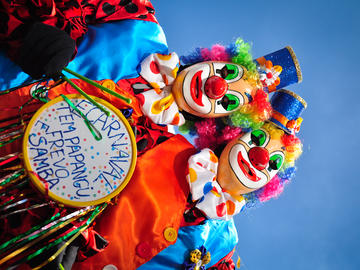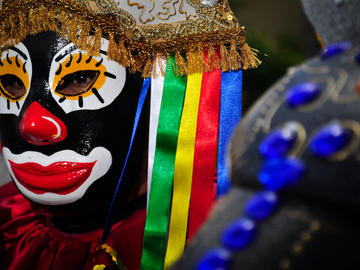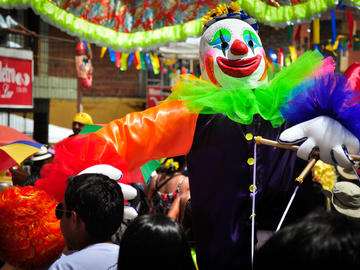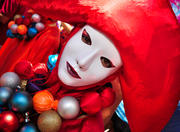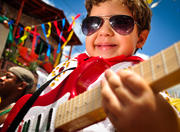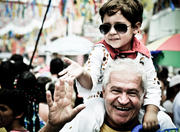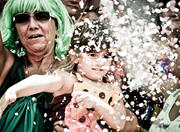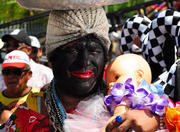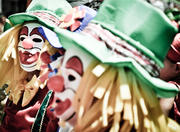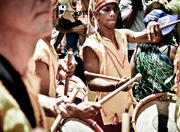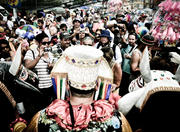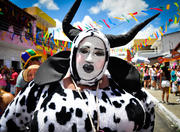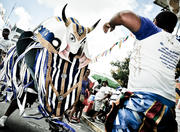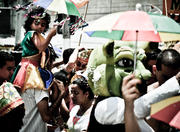Folia do Papangu Picture 4

More information on Folia do Papangu - Bezerros Pernambuco Photo by: Hesíodo Góes
Folia do Papangu - Bezerros Pernambuco
Thousands of anonymous revelers hidden under masks and bodies covered by sheets and colorful costumes on Sunday held a tradition that has lasted nearly a century in the Pernambuco: Pagangu Carnival, a traditional folk event of the city of Bezerros.
At the party, anonymity is the reason for the revelry. The residents are fun to play all day without being recognized. For this reason, many even use gloves to avoid exposure of a piece of skin. The masks are only drawn at the end of the day.
The heat of the Wasteland does not deter the revelers who participate in a parade of about two miles on city streets. Along the way, take advantage of anonymity to play and cause friends who do not recognize them.
The costumes, which years ago were always very similar _máscaras oval cacheadas_ wigs today are varied and creative. The block "You Appear?" paraded with people who used hollow watermelons on his head with holes for eyes.
The tradition of Papangus emerged at the beginning of last century, in 1905, according to a report made by artisans and carnival masks Lula broom-maker. The first masks were made with dried beef wrapping paper and cardboard. The masked men took to the streets to ask for aid and won eggs, fruit and chickens.
The name papangu already emerged in the 50s, when the masks began to be made of newsprint, painted with dyes made from tar and gasoline. The masked revelers were received in homes with polenta, a kind of porridge made from corn.
Food and hunger of the revelers, who took advantage of the masks to eat mush more than once in one place, gave rise to the name of the masked carnival in Pernambuco.
With the growth of tourism during the party, the manufacture of masks has also become an important source of income for city dwellers.
The City of Bezerros estimates that approximately 10% of the population of 6,000 people gets directly involved in the activity, still handmade in the months preceding Carnival.
More Photos of Folia do Papangu Picture 4
